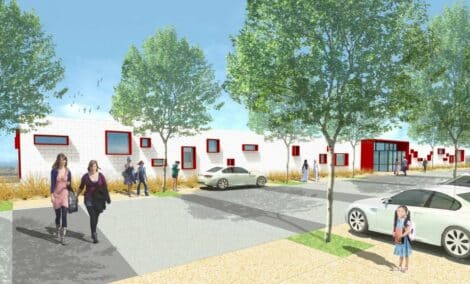 Kelston Deaf Education Centre provides educational programmes and services to deaf and hearing impaired students throughout the northern half of NZ’s North Island. The Centre has just completed a major $12 million redevelopment upgrade of facilities which includes brand new residential and teaching blocks. The residential hostel building is single storey and includes 23 bedrooms and associated kitchen and living facilities. The School building is also single storey and houses Administration, a Museum and open learning areas for students.
Kelston Deaf Education Centre provides educational programmes and services to deaf and hearing impaired students throughout the northern half of NZ’s North Island. The Centre has just completed a major $12 million redevelopment upgrade of facilities which includes brand new residential and teaching blocks. The residential hostel building is single storey and includes 23 bedrooms and associated kitchen and living facilities. The School building is also single storey and houses Administration, a Museum and open learning areas for students.
Intelligent Environments Auckland were contracted by the electrical contractor to provide the required school lighting systems for both the new education block and the new accommodation hostel.
The project included a variety of different controls, for example DALI dimming through the rooms in the hostel, with provision for a “visual doorbell”. This allows for hearing impaired occupiers of the rooms to “see” that someone is at their door. A push button outside each door triggers the “visual doorbell” activating a brief scene ramping the lights on and off. An additional function was provided enabling the lights to turn on and off repeatedly in the event of an evacuation, again ensuring occupiers are aware of the need to evacuate.
Corridors in the residential area were fitted with 230v CP Electronic sensors to ensure lights are operated via movement but only when there is not enough natural daylight.
For the school lighting systems in the teaching block, additional CP Electronic 230v sensors again control lighting via movement and daylight sensing within some rooms and the corridors. However, the classrooms have a specialised ‘teacher attention’ system. For standard use lights in the classrooms can be switched on/off from the switch, but when no movement is detected for a pre-set time, the sensors will turn lights off. The ‘teacher attention’ system incorporates a set of 3 dali controlled lights and allows the teacher to use a handheld remote to initiate the ramping on and off of those lights in order to draw the students attention. This same functionality is also applied to a switch at the entry to the classrooms.
This project provides an excellent example of how a wide range of functionality can be provided at a cost significantly lower than would be incurred by a traditional full lighting control system. The control system for Kelston Deaf Education Centre included a mix of logic written for the C-Bus backbone, DALI programming, and the standalone CP Electronics range of energy saving sensors. By customising the design and associated programming Intelligent Environments Ltd were able to meet the clients quite specific requirements.


